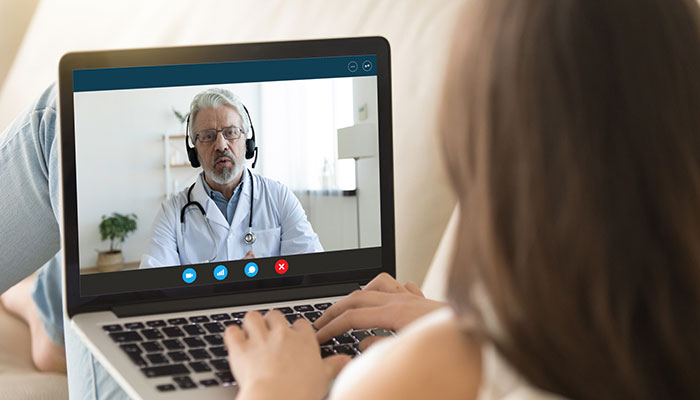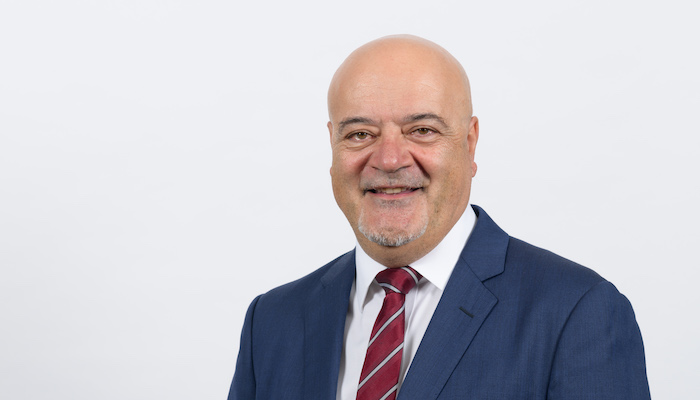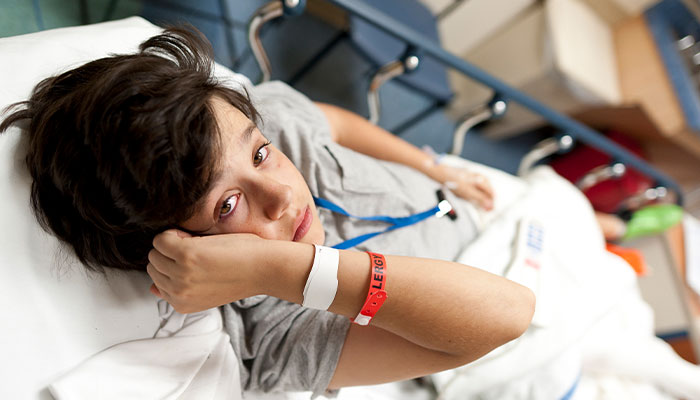Telehealth consultations with GPs are booming among urban and rural patients since the government introduced temporary Medicare Benefit Scheme (MBS) support in March this year – and authors of a new report analysing GP visits at 800 practices across Australia argue the MBS changes should be permanent.

Proof: researchers say their findings showing a boom in telehealth doctor's appointments supports calls for the government to extend the scheme beyond the current cut-off on March 31, 2020.
Professor Andrew Georgiou and his co-authors found that phone consultations with GPs in NSW and Victoria climbed from zero during 2019 to more than 138,000 per week between January and September 2020.
Despite the restrictions of the Covid-19 pandemic, the researchers found that people consulted GPs more often from January to September 2020, than they did in the same period in 2019.
“We think much of that is because people could access Telehealth,” says Professor Georgiou, from Macquarie University’s Centre for Health Systems and Safety Research.
He says the report contains unequivocal data to support calls for the government extending the use of MBS Telehealth Service item numbers to support patients and GPs beyond the current 31 March 2021 cut-off.
Telehealth has been an absolute game-changer in General Practice, and I think we have to acknowledge, we can’t turn the clock back – it’s now an important part of how we work.
The researchers also report that during the height of Victoria’s second COVID-19 wave in August, phone consultations exceeded face-to-face consultations for the first time.
The study covers nearly 30 per cent of the Australian population, including urban and rural/remote regions from approximately 800 general practices (454 from Victoria and 346 from NSW).
Game changer
“Telehealth has been an absolute game-changer in General Practice, and I think we have to acknowledge, we can’t turn the clock back – it’s now an important part of how we work,” says Dr Chris Pearce, who has been a GP in Melbourne’s eastern suburbs for 20 years.
“Here’s a typical example: I might see a patient and order a blood test, and a year ago, I’d say – come back and see me and we’ll go through the results. They take the morning off work, and sit in my waiting room for however long it takes,” he says.

Slower burn: video consultations did not take off in the same big numbers as phone consultations, the research found.
“Now, we have a ten-minute phone call, it’s more convenient for them, it’s more convenient for me – I can do some of my work from home.”
He says that telehealth can be used by doctors to more effectively co-ordinate care for their patients.
During a telephone consultation, for example, doctors can do routine and continuing care, arrange referrals and prescribe, while identifying patients who they need to see in person.
- Breakdancing for equality - and now a spot at the Olympics
- New COVID-19 strategy: vacinate potential superspreaders first
Dr Pearce says that during Victoria’s second lockdown, many of his elderly patients did not want to risk going out for medical appointments, so Telehealth meant they could consult about medications and renew scripts, limiting physical visits to the essentials.
“Apart from the Medicare support for GP consultations, a raft of other changes were pushed through such as sending prescriptions electronically and more online radiology and pathology,” he says.
Dr Pearce also chairs the College of Rural and Remote Medicine’s Digital Health committee, and is the Research Director for not-for-profit Outcome Health.
He says Telehealth has been great for people who have mobility issues through physical or psychological disability, and for people in rural and regional areas facing time and transport costs for health care.
“We do need to physically see our patients from time to time, and we’re starting to see it settle into particular ratios which vary from state to state.”
Lockdown impacts
In Victoria, around 40 per cent of GP consultations each week between January and September 2020 were via telehealth, while NSW telehealth GP consultations made up nearly 30 per cent of weekly GP consultations
“We found the vast majority of telehealth consultations were done by phone and that video didn’t take off in the same way, probably through a lack of technology or knowledge in both doctors and patients,” says Professor Georgiou.
This report is the first ‘snapshot’ into GP services during the pandemic and future reports from the researchers to be delivered in coming months will investigate other aspects of General Practice.
- Please explain: Can you really make friends with an octopus?
- What is 'slacktivism' and can it change the world?
“We know that even though telehealth is not a pure substitute for a face-to-face consultation, it did deliver a lot of important medical care through the pandemic,” he says.
“We are very interested to see how things changed in General Practice over the course of the pandemic, with these levels of telehealth consultations. Did patients get the same level of care? How were conditions such as diabetes and cancer managed during this time?”
Comparing care in NSW and Victoria over the period of Victoria’s second lockdown may also deliver some interesting insights, he adds.
The 800 General Practices that took part in the study were from five Primary Health Networks (PHNs), three in Victoria and two in NSW. Victorian networks included two urban (Eastern Melbourne and South Eastern Melbourne) and a predominantly rural (Gippsland), while NSW included Central and Eastern Sydney (urban) and South Western Sydney (incorporating rural areas Wingello to Bundanoon).

Telehealth boom: Prof Andrew Georgiou from Macquarie's Centre for Health Systems & Safety Research says research will continue in a bid to discover how care for a range of specific conditions is affected by telehealth consultations.
The project was supported by the Digital Health Cooperative Research Centre, Macquarie University, Outcome Health, Gippsland, Eastern Melbourne and South Eastern Melbourne PHNs, and the Royal College of Pathologists of Australasia Quality Assurance Programs, with participation from Central and Eastern Sydney and South Western Sydney PHNs.
Declaration: The writer Fran Molloy has been contracted from time to time as a communications consultant for the Digital Health CRC which partly contributed to the funding of this study. She had no role in this specific research project.



